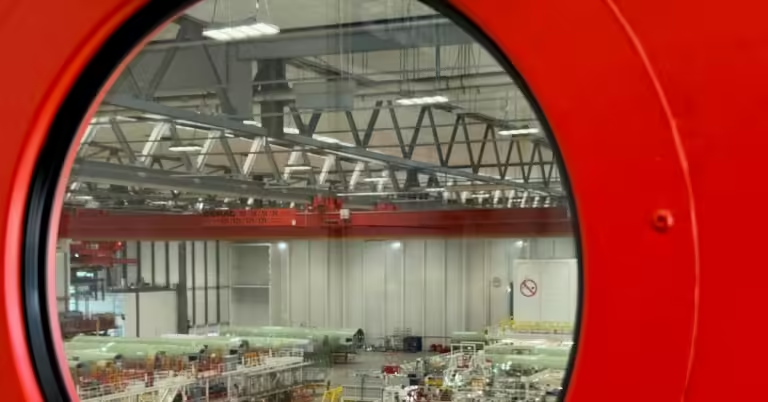This story was originally Published in WIRED Italia and translated from Italian.
This is the most important moment in an aircraft’s life – the moment when the new owner signs and takes possession of the aircraft, much like a driver receiving a new car from the dealer.
The plane in question, an Airbus A321neo, was parked at Hamburg-Finkenwerder, Germany’s second-largest airport, which Airbus uses for testing, logistics and customer aircraft deliveries. Gathered around the plane were pilots, cabin crew and two executives from Hungarian low-cost airline Wizz Air, which is about to take delivery of the plane.
Airlines and manufacturers never disclose how much they pay for individual planes, in part because the price depends on many factors, including the number of planes purchased and each airline’s operating performance, but buying planes isn’t cheap: The base price of a single Airbus A321neo is estimated to be around $110 million.
The plane, registered by Wizz Air as H9-WNM, was built in just over a year at Airbus’ Hamburg factory, one of the company’s four production centers — the others are in Toulouse, France; Mobile, Alabama; and Tianjin, China. These giant factories, known as final assembly lines (FALs), assemble all of the plane’s structural parts, onboard electronics, hydraulic and mechanical components, and other parts.
Final armament process for an Airbus A320neo in Hamburg.Photo: Antonio Dini
But before these parts can get to the FAL, they need to be manufactured. Some are made in-house at Airbus, others by third parties, and together they are produced in dozens of factories and centers around the world. And putting them all together is a massive logistical challenge. This complex ballet involves transport by ship, train, road and air, with a small fleet of special transport planes called Belugas playing a key role. These aircraft, with their enormous girth similar to that of a beluga, were created by Airbus to move large parts such as fuselages from one manufacturing center to another.

